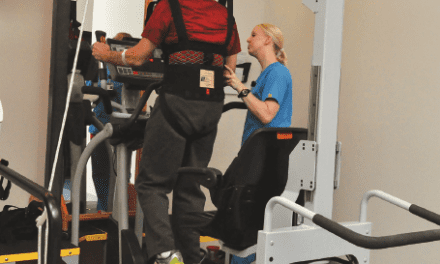In a news article posted recently in Self, physical therapists shared that they regularly see patients who aren’t injured, who use physical therapy as a form of preventative medicine.
“People come see us [after] surgery or sprained ankles or prehab before surgery, but the more interesting thing is that I have patients who are getting into their 30s and 40s and are realizing, ‘Wow, I want to live longer, maybe have a family. And I don’t want to have to be hunched over or have back surgery. How can I prevent that?’ ” Karen Joubert, DPT, a physical therapist in Beverly Hills, Calif, tells Self.
Joubert adds that she sees actors and models regularly to help them work on their posture and overall body awareness. She also works with several singers, helping them with diaphragmic breathing.
The preventative medicine patients that Dan Giordano, DPT, CSCS, sees are looking for ways to keep their bodies functioning properly and avoid injury. He notes that he’ll do manual work, like soft tissue massage. Then, he will give them an exercise program that they can perform at home.
The preventative appointments could reveal some sort of underlying dysfunction, such as muscle imbalance, extreme tightness, or compromised range of motion, Giordano says.
“It’s not necessarily pain, but maybe they feel off and that off feeling is something that could lead to injury. So it’s very important that it’s addressed early,” he states, adding in the article that often after an evaluation, a patient will have a ‘Well, now that you mention it,’ moment, where they reveal that something did feel off but they couldn’t pinpoint it.
Michael H. Rieber, MD, FACS, shares a different view in the article: “I don’t know if I would promote just going [to physical therapy] for the [heck of it.] There’s nothing wrong with it, but I don’t know if I’d promote it.”
“But if all of a sudden you said you wanted to train for the New York City marathon, I’d say go and be evaluated, whether it’s by a rehab specialist or physical therapist or an orthopedic surgeon,” adds Rieber, chief of the Joint Institute of Saint Barnabas Medical Center.
Henry Goitz, MD, an orthopedic surgeon at Detroit Medical Center, notes that a physical therapist could almost become a personal trainer for those, for example, who are running a marathon and fall off their training schedule and need help getting back on track in a safe way.
However, he says, “Generally speaking, there’s not a benefit to ‘tune ups.’ Even for patients who have had a past injury—if it’s been treated and resolved, further physical therapy is unnecessary unless it starts acting up again.”
Visiting a physical therapist before training for a triathlon or joining a recreational sports league could be a smart idea to help avoid injury and learn what one’s body needs during training. Visiting a PT to check in is a personal decision depending on one’s health and fitness goals, the article concludes, adding that in general, if an injury has occurred, one should see a doctor or a physical therapist to address it before it gets worse.
[Source: Self]





